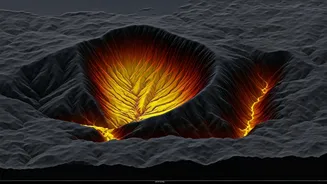Decoding Photosynthesis
Photosynthesis, the remarkable process by which plants convert light energy into chemical energy, has fascinated scientists for generations. A crucial
part of this process involves the capture of sunlight by pigment-protein complexes called light-harvesting complexes. These complexes contain chlorophyll, which absorbs light, and then transfers this energy to a reaction center where it kickstarts photosynthesis. Until recently, the specifics of how this energy transfer functioned at the molecular level remained unclear. The IISc-Caltech team focused on understanding the behavior of these light-harvesting complexes. Their approach involved detailed experimentation and sophisticated computational modeling to explore how light energy is absorbed and transported within these complexes. This study provides a clear picture of the mechanisms behind light harvesting.
The Research Details
The collaborative research employed a range of techniques, including time-resolved spectroscopy and structural biology, to observe the light-harvesting process in action. Time-resolved spectroscopy allowed the researchers to monitor the movement of energy within the light-harvesting complexes with incredible precision. By using these methods, they were able to map the pathways of energy transfer. Complementing these experimental studies, the team used advanced computational simulations to model the light-harvesting complexes at the atomic level. These simulations helped to visualize and predict the complex interactions of atoms and molecules involved in the energy transfer. The combination of experimental and computational approaches enabled the scientists to construct a complete picture of the entire light-harvesting process, from the initial absorption of photons to the delivery of energy to the reaction center.
Key Findings Unveiled
The core revelation from this study concerns the intricate details of how light energy flows within light-harvesting complexes. The researchers found that the energy transfer isn't simply a direct process. Instead, it involves a series of precisely choreographed steps, with the energy moving through multiple pigment molecules before arriving at the reaction center. This staged process ensures high efficiency and safeguards against energy loss. The team's findings showed that the structural arrangement of pigment molecules within the light-harvesting complexes is vital for efficient energy transfer. This specific arrangement allows the energy to be channeled along a specific path, directing it efficiently to the reaction center. In essence, the research showed a delicate balance between the structural properties of the complexes and the pathways of energy transfer. This understanding is crucial for efforts to replicate the process synthetically.
Broader Implications
The research outcomes have implications well beyond basic scientific curiosity. By elucidating how plants capture light energy with such extraordinary efficiency, the study gives a model for developing innovative renewable energy solutions. For instance, mimicking the structural design of light-harvesting complexes could lead to the creation of more efficient solar panels. If researchers can recreate this highly efficient energy transfer, it could provide a new approach to creating more sustainable energy technology. The findings can also be used in agricultural applications to improve crop yields. The research provides tools to study the efficiency of photosynthesis in various plant species. This could enable scientists to breed plants that are more adept at converting sunlight into energy. The understanding of how the process works provides novel insights for the development of more resilient and productive crops.











